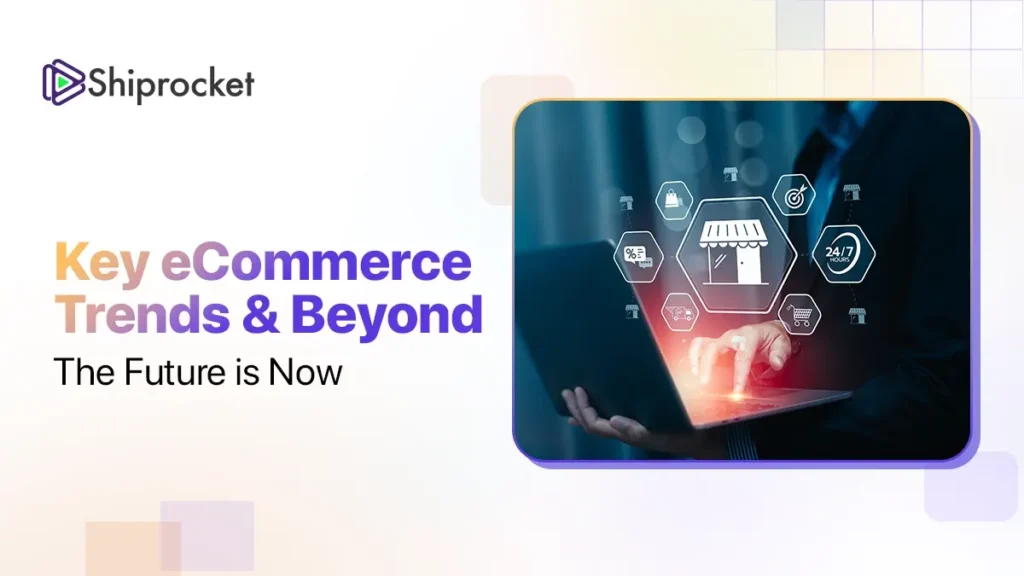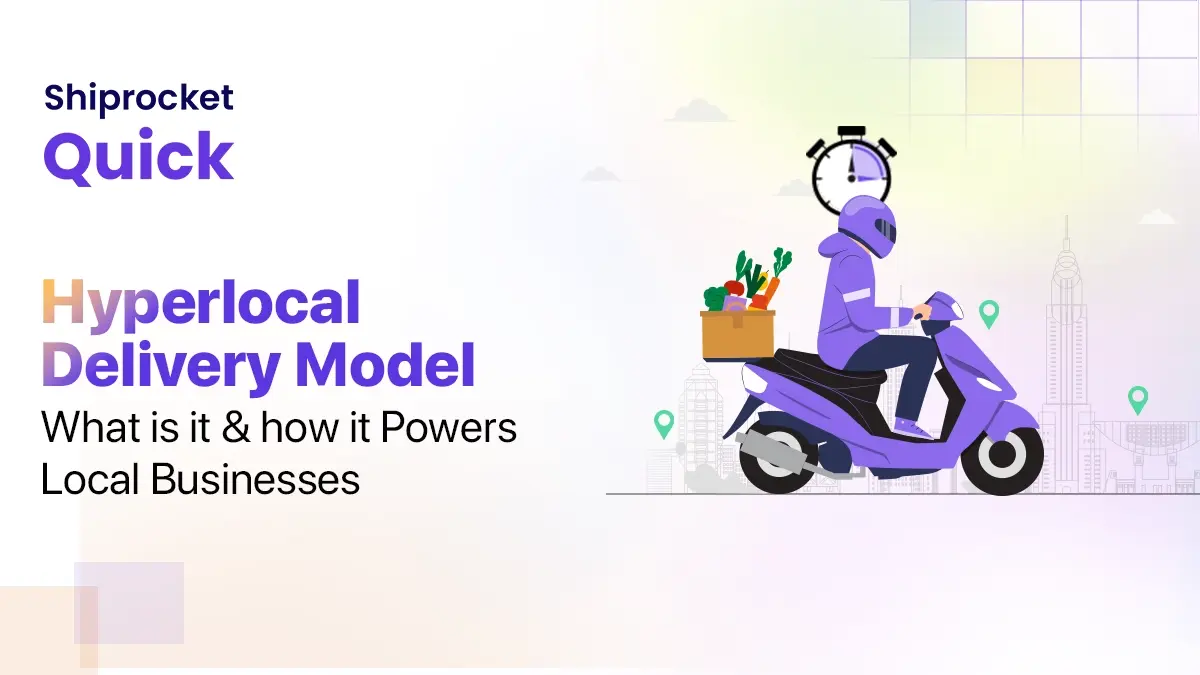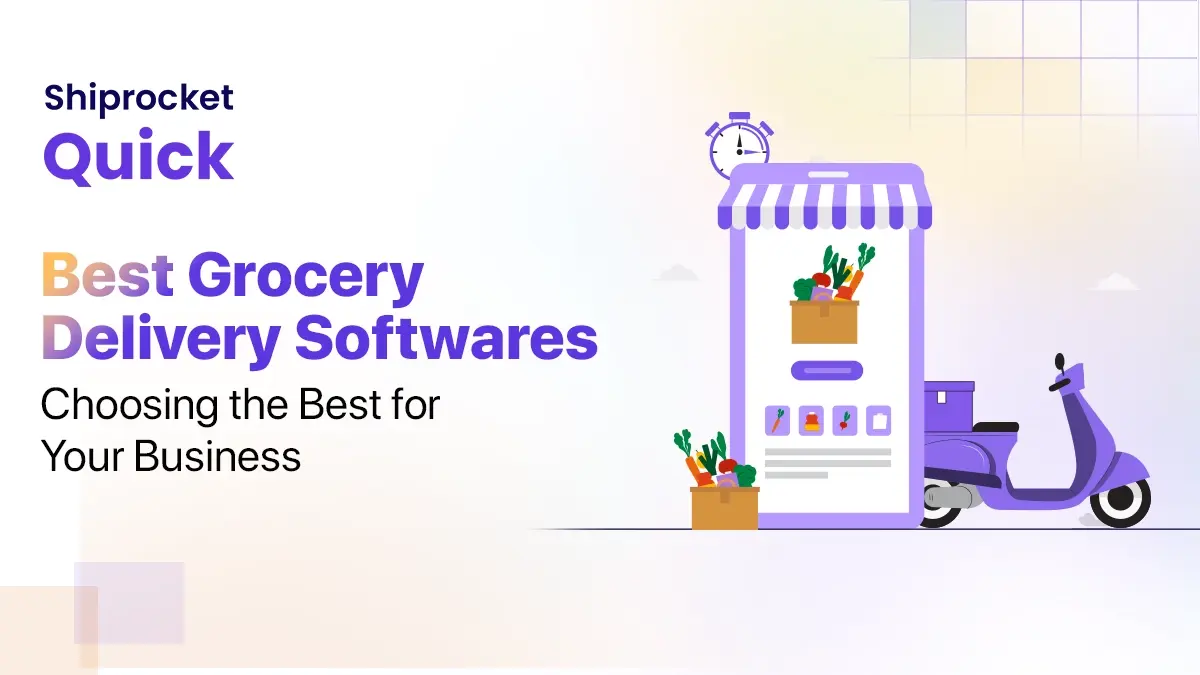The Future of eCommerce: Trends to Watch in 2025 and Beyond
Like any other industry, eCommerce is evolving—but at the speed of knots. This shift is largely driven by convenience, user behaviour and the minimal setup costs most stakeholders need to incur. These changes influence various aspects of the eCommerce sector and businesses must stay mindful of them, adapting in sync to remain relevant and appealing to customers.
As we step into 2025 and beyond, entrepreneurs must stay ahead of the curve to maintain competitiveness. In this blog, we explore the key trends shaping the future of eCommerce and what they mean for businesses worldwide.

Trends to Watch in 2025 and Beyond
Artificial intelligence (AI) is no longer a futuristic concept—it has become an essential component of almost every industry, including eCommerce. The global AI in eCommerce market is expected to grow from $5.79 billion in 2023 to around $51 billion by 2033. Nowadays, from personalised shopping experiences to efficient customer service, AI is transforming how businesses operate at every level.
- AI-driven Personalisation: AI-driven recommendations based on consumer behavior, preferences and purchase history are enhancing the shopping experience, leading to increased conversions and customer loyalty.
- Chatbots and Virtual Assistants: AI-powered chatbots are handling customer inquiries 24/7, providing instant support and reducing operational costs for businesses.
- Automated Inventory and Supply Chain Management: AI-driven demand forecasting helps businesses optimise inventory, reducing overstock and stockouts.
The Growth of Voice Commerce
As the saying goes, “necessity is the mother of invention”, but in today’s world, convenience and efficiency are driving innovation just as much. Voice commerce is an example of this shift.
- Hands-Free Shopping: Consumers can now order products using simple voice commands, enhancing convenience and accessibility.
- Voice Search Optimisation: Businesses must tailor their content for voice search to capture a growing audience of voice-based shoppers.
- Seamless Integration with Smart Devices: As smart home technology expands, voice commerce will naturally become a part of everyday routines.
With consumers increasingly looking for frictionless shopping experiences, businesses that adapt to voice commerce will stay ahead in the evolving eCommerce landscape.
The Expansion of Social Commerce
Social media platforms began as spaces for engagement, but their search for profitability led to significant shifts in their functionality over the years. The rise of social commerce is a natural extension of this evolution, transforming these platforms into thriving business ecosystems—driven largely by user behaviour
- In-App Purchases: Platforms like Instagram, Facebook and TikTok allow users to purchase products directly without leaving the app.
- Influencer-Driven Shopping: Influencer marketing continues to drive sales, with direct links and shopping tags making purchases seamless.
- Live Shopping Events: Real-time product demonstrations and interactive Q&A sessions on social platforms are driving engagement and sales.
AR (Augmented Reality) and VR (Virtual Reality)
AR and VR technologies are impacting the eCommerce industry in a big way. They are changing the way consumers shop online by bridging the gap between digital and physical retail experiences.
- Virtual Try-Ons: Fashion and beauty brands are integrating AR-powered try-ons to help customers see how products will look before buying.
- 3D Product Visualisation: Home decor and furniture brands are using AR to let customers visualise products in their own space.
- Immersive Shopping Experiences: Virtual stores and showrooms provide an interactive shopping experience without requiring a physical presence.
The Rise of Quick Commerce
Speed is not just for the roads and tracks—it’s transforming eCommerce as well. Product deliveries are now happening in under 10 minutes and this timeframe is likely to get even shorter.
- 10-Minute Deliveries: Hyperlocal delivery models ensure products reach customers within minutes of ordering.
- Dark Stores & Micro-Fulfillment Centers: Retailers are setting up local warehouses to expedite delivery times.
- Partnerships with Delivery Apps: eCommerce brands are leveraging on-demand delivery services for instant gratification.
Sustainable and Ethical eCommerce
Consumers are becoming more environmentally conscious, demanding sustainable and ethical shopping options.
- Eco-Friendly Packaging: Brands are adopting biodegradable, recyclable and reusable packaging solutions.
- Carbon-Neutral Shipping: Companies are investing in green logistics and offsetting carbon footprints.
- Ethical Sourcing and Transparency: Customers expect brands to be transparent about sourcing, labor practices and sustainability initiatives.
Subscription Commerce Continues to Grow
Subscription models are gaining traction across various industries, providing businesses with recurring revenue streams and fostering brand loyalty.
- Curated Subscription Boxes: Personalised product assortments keep customers engaged.
- Convenience-Driven Models: Essentials like groceries, pet supplies and personal care products are seeing higher subscription adoption.
- Exclusive Member Benefits: Businesses are offering perks like discounts, early access and exclusive content for subscribers.
The Future
As we look ahead to 2025 and beyond, the pace of change in the eCommerce industry will only increase. Emerging technologies, consumer expectations and global shifts will continue to reshape how businesses operate and engage with users.
The growth of quick commerce will push delivery times to even shorter windows, and sustainability will remain a key driver of consumer purchasing decisions. Moreover, the rise of blockchain and cryptocurrency will add new layers of security, trust and efficiency to eCommerce transactions. In the future, businesses that are agile, innovative and in sync with these shifts will be best positioned to thrive in an increasingly competitive marketplace.
Final Thoughts
The future of eCommerce is being shaped by innovation, speed and customer-centricity. Businesses that embrace these trends will stay ahead in the competitive landscape. Whether through AI-driven personalisation, sustainable practices, or social commerce, brands must continuously evolve to meet consumer expectations.
By making the most of emerging technologies, optimising operations and prioritising customer experience, eCommerce businesses can pick new opportunities for growth in 2025 and beyond.








your article is worth